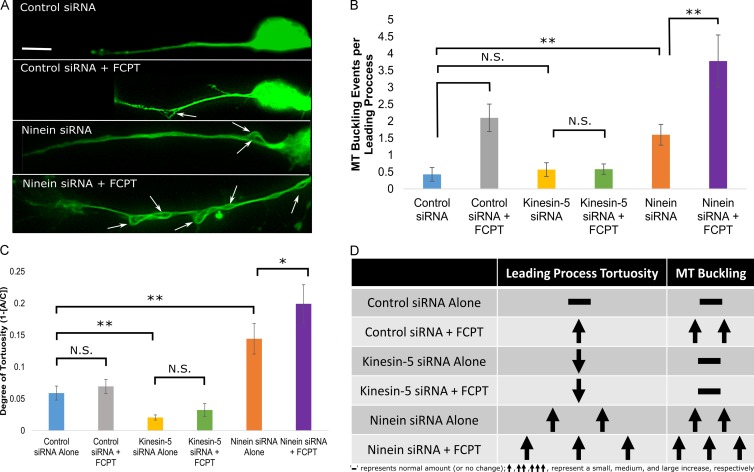Figure 5.
Uncontrolled MT sliding alters migratory neuron phenotype and increases MT buckling in the leading process. (A) Cultured rat cerebellar granule neurons subjected to one of the following four conditions: (1) Control siRNA (top); (2) Control siRNA + 50 µM FCPT (top middle); (3) ninein siRNA (bottom middle); and (4) ninein siRNA + 50 µM FCPT (bottom). Neurons were immunostained for tubulin and subsequently analyzed for MT buckling (indicated by white arrows) in the leading process. (B) A bar graph displaying the mean number of MT buckling events present in the leading process of migratory neurons under differing conditions. Treatment with FCPT increases MT buckling per leading process. Kinesin-5 depletion abolishes this effect. (C) A bar graph displaying the mean degree of tortuosity of the leading process of migratory neurons. Neurons treated with control siRNA or control siRNA and FCPT showed equivalent leading process tortuosity. Depleting ninein significantly increases the tortuosity of the leading process, and application of FCPT further exacerbates leading process tortuosity after partial ninein depletion. (D) Table summarizing the observed changes to leading process tortuosity and MT buckling under the tested conditions. (n = 15 per group; brackets indicate statistical analyses between groups). N.S., not significant; *, P < 0.05; **, P < 0.01. Bar, 10 µm. Data are represented as mean ± SEM.

